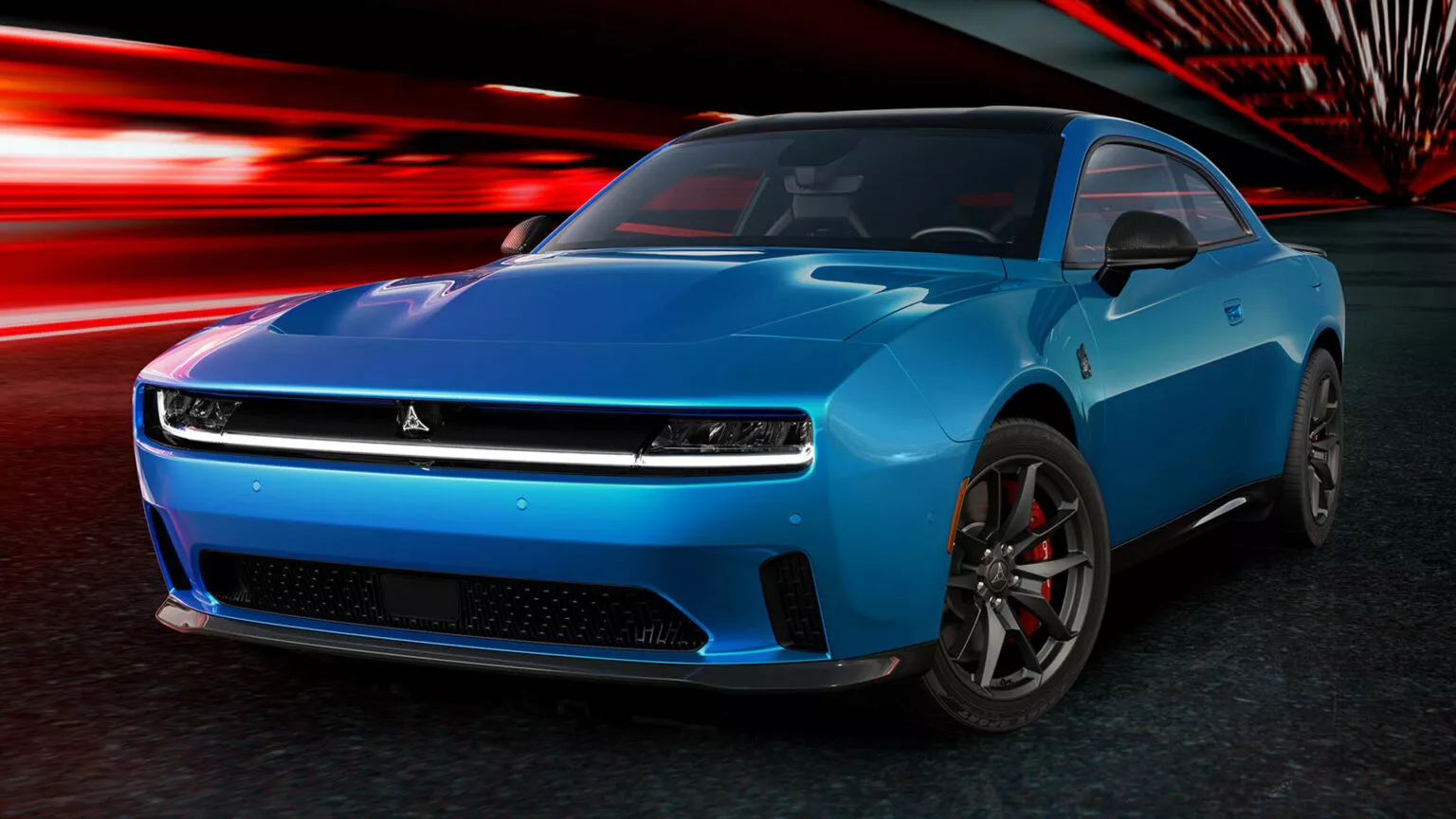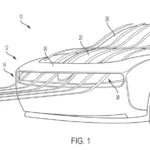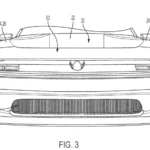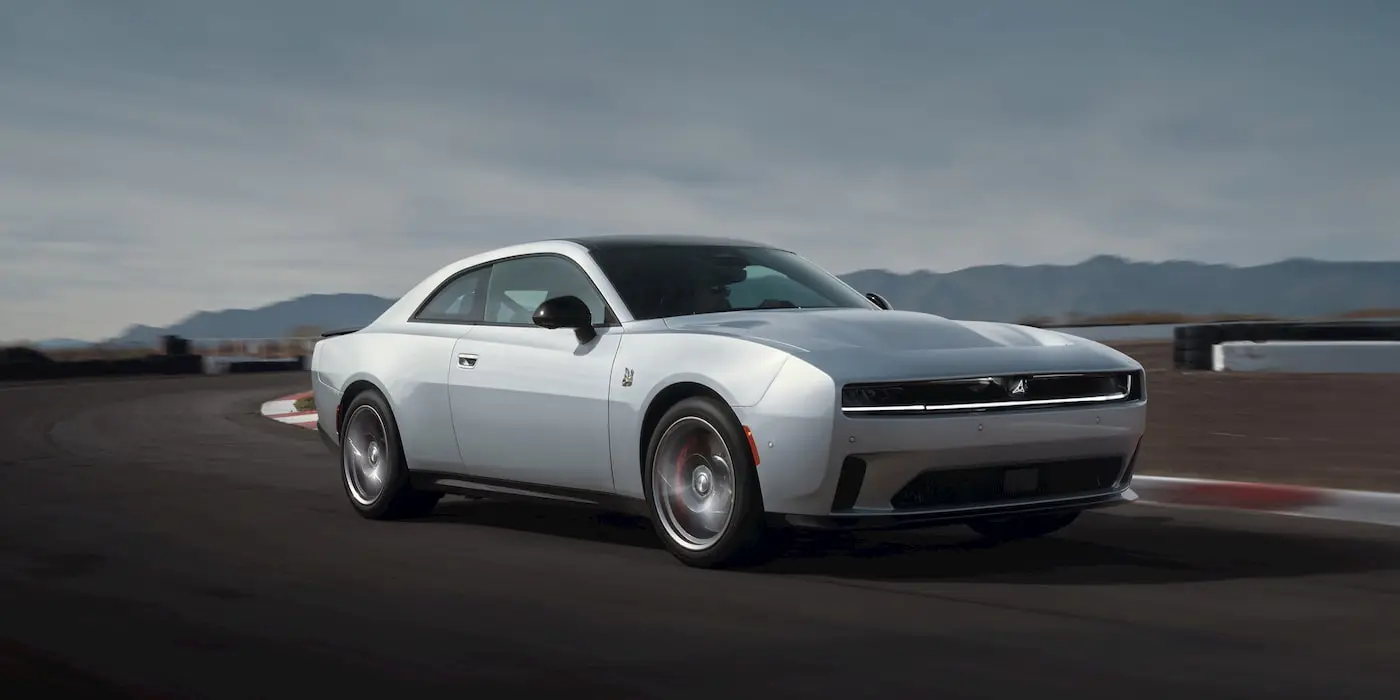Recent filings with the United States Patent and Trademark Office (USPTO) hint at a potential advancement for the R-wing of the new-generation Dodge Charger, suggesting Dodge’s commitment to pushing the boundaries of aerodynamic performance.
The standard R-wing, designed as an aero pass-through in the Charger’s front fascia, may undergo further development, as revealed by a new patent discovered by Carbuzz. The patent depicts a revised R-wing with adjustable flaps that could enhance downforce, akin to the active aerodynamic flaps found on the Pagani Huayra.
Dodge’s engineers aim to integrate actuators for the flaps within the central beam of the R-wing, ensuring they remain discreetly hidden from view. These flaps could potentially operate independently or as a cohesive unit.
According to the patent filing, Dodge states that the flap, in its default position, is “configured to provide drag and front lift reduction,” while one or more actuators would adjust the angle of attack. The ability to operate the two flaps independently could aid in “certain driving maneuvers such as turning at high speeds,” Dodge adds.
The innovative wing could potentially adjust automatically based on driving conditions, including driving mode, ambient temperature, or speed. Additionally, the wing’s angle could be manually adjustable from inside the vehicle.
While Dodge has already unveiled both combustion and battery-electric versions of the 2024 Charger, neither features adjustable R-wing flaps as depicted in the patent. Therefore, if these active aerodynamic flaps were to reach production, they would likely debut with a new flagship version of either the ICE or EV model.
Speculation suggests that the forthcoming 800-volt Charger Daytona EV range-topper could be the ideal candidate to introduce this active aerodynamic feature. Dodge’s potential adoption of advanced aerodynamics underscores its commitment to enhancing the Charger’s performance and efficiency, further solidifying its position in the automotive market.










